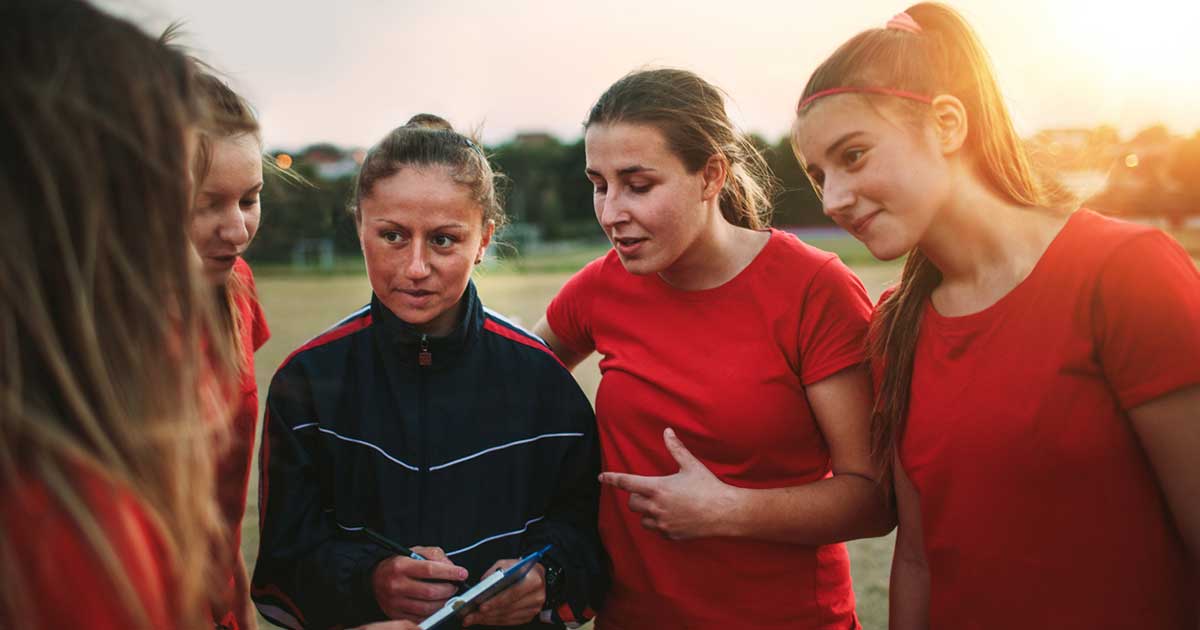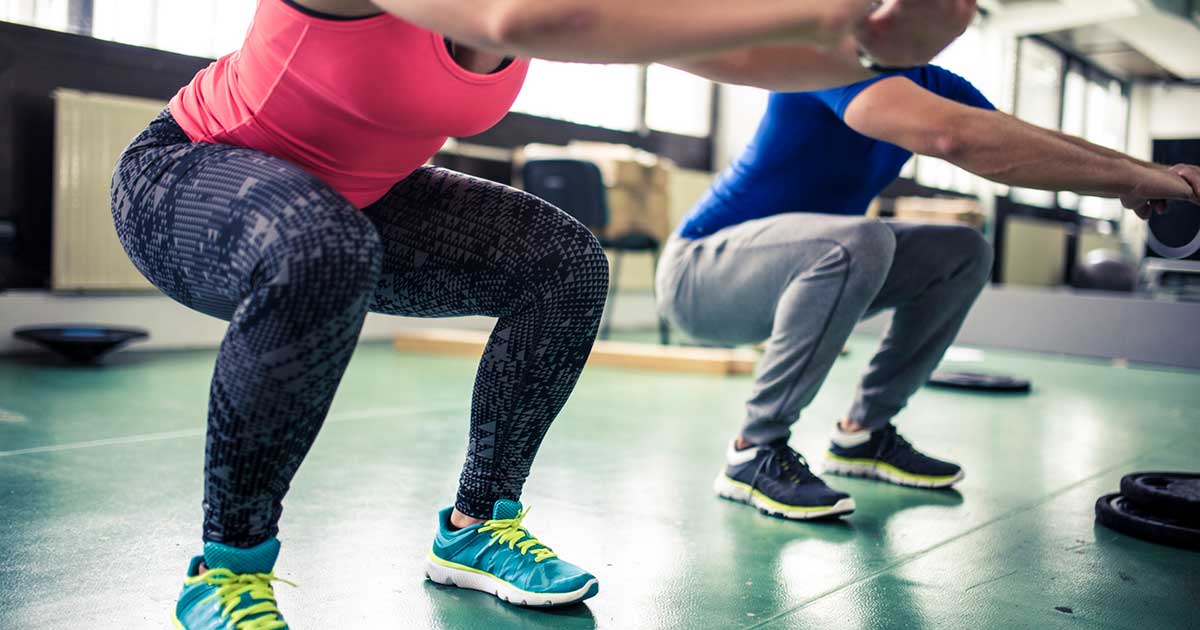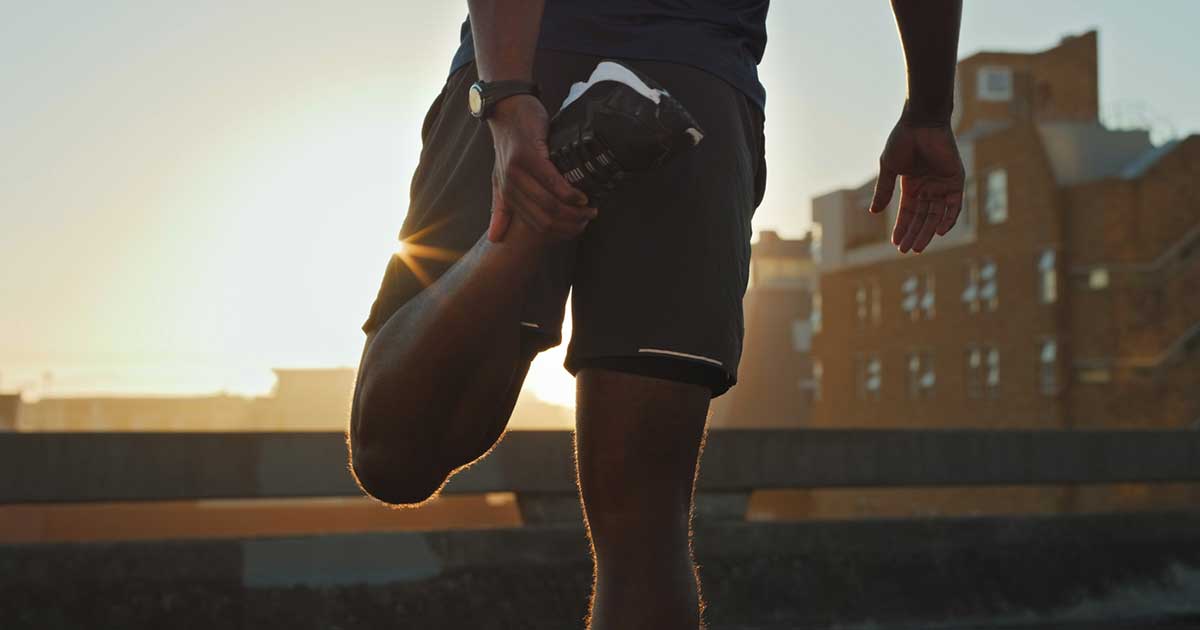
Advice to improve your movement, fitness, and overall health from the #1 in orthopedics in the U.S.
Stretches and Exercises to Strengthen Your Knees, from a PT
One key to dealing with knee pain is to strengthen the muscles that support the joint.
Advice to improve your movement, fitness, and overall health from the #1 in orthopedics in the U.S.
If you’ve got achy knees, don’t be so quick to chalk it up to age- or sports-related wear-and-tear or arthritis. “Knee pain doesn’t always mean there’s damage,” says Aleksandra Kuta, PT, DPT, OCS, a physical therapist at HSS Hudson Yards. “The cause might be a lack of flexibility or strength.”

So how does a lack of strength or flexibility cause knee pain? The muscles in your legs and glutes (butt) need to be strong enough to keep the knee stable, so it won’t shift sideways when you move. Those muscles also need to be stretchy enough to let your knees go through their full range of motion. When you’re off-kilter in one of these areas, that can place extra stress on parts of the knee that aren’t meant to handle it.
Sitting too much can also lead to knee pain. “If your job requires you to sit for more than an hour at a time, you will most likely have knee discomfort due to the sitting," says Kuta. "Your muscles and tendons might stiffen and become uncomfortable."
When to Seek Help for Knee Pain
Any type of pain that results from an injury (like a fall or a blow), that lasts more than a month or that derails your daily activities should be checked out by a professional. Also seek treatment if your knee feels unstable or is giving out or locking up. (See “When to See a Doctor for Knee Pain” for more guidance.)
If you’re just a little twinge-y, you can try the stretches and exercises below. "If done consistently, they can give you a lot of relief," says Kuta. If your pain worsens or doesn’t improve in a month, though, it’s time to see a PT.
"A PT can look at the entire body to see how well it moves," says Kuta. "More specifically, they can look at the joints above and below the knee that may be lacking mobility or strength." For example, maybe your right glute is a lot stronger than your left glute, causing more stress through your left knee every time you take a step. "A clinician can give you a targeted strength and mobility program that is just right for you," she adds.
3 Stretches for Knee Flexibility
“People tell me, ‘I’ve never been flexible,’” says Kuta. “But we’re all flexible when we’re born. It’s what we do throughout life that changes that.” While not everyone can regain the ability to touch their toes, she notes, everyone can make some progress if they stretch regularly. Even a little loosening up may be enough to ease your achy knees. Some tips:
- Do each stretch 3 times per week or more. (You can do them daily, if you like.)
- Hold each stretch 1 to 2 minutes.
- Don’t bounce or push yourself to the point of pain. You should feel a stretch, not a sharp jab.
Half-Kneeling Hip Flexor Stretch
- Kneel on the floor. (Put an exercise mat or towel under your knee if you like.)
- Step out your left foot so the left knee is bent at a 90-degree angle. Place the top of your right foot down and make sure your right leg is straight behind you.
- Place your hands on your hips, then squeeze your glutes to tuck your pelvis under you. You can leave your hands there or place them on your knee for the next part.
- Keeping your gaze forward and your back straight, shift your weight forward until you feel a stretch through the front of your right hip. Hold for 1 to 2 minutes without bouncing or shifting.
- Shift your weight back, return your left knee to the floor, then repeat on the other side.
Dynamic Hamstring Floor Stretch
- Lie on your back with your legs extended.
- Bend your left knee toward your chest. Reach your hands around your left thigh and grasp behind it with both hands.
- Pull your left leg toward you, keeping your arms straight and upper body relaxed. Aim to get your knee stacked over your hip; there’s no need to pull hard.
- Straighten your left leg with your foot toward the ceiling, then bend your knee again to relax, using a slow and controlled motion. It’s OK if you can’t straighten all the way; just go as far as is comfortable.
- Repeat this straightening and bending for 1 to 2 minutes.
- Lower the left leg to the floor, extend it straight, then repeat on the other side.
Figure 4 Stretch
- Lie on your back with your knees bent and feet flat on the floor.
- Cross your left ankle over your right knee.
- Reach your hands around your right thigh and grasp behind it with both hands. Pull your leg toward your chest until you feel a stretch in your left glute and hip.
- Hold for 1 to 2 minutes, then return to the starting position and repeat on the other side.
Note: You can also open the hips a little if you press gently on the inside of your left (raised) knee with your left palm.
4 Exercises to Strengthen the Knees
Most of these exercises don’t require extra equipment, though you’ll need a 2- or 3-inch latex resistance band for the Monster Walk. You may also want some weights for the deadlift and squat exercises, though you could use canned goods, gallon water bottles, paint cans or other household objects instead.
Some tips:
- If you’re stiff, warm up a little by walking around or doing stretches (like the ones above).
- Do these exercises 3 times per week, ideally with a day of rest in between.
- You can do these moves one after another or break up the program over the course of a day. Do whatever works best with your schedule and your body.
- If your form starts to break down (say, your back arches or rounds), put down the extra weight or move on to the next exercise. (You don’t want to throw out your back while trying to shore up your knees.)
- If you can do 20 reps of an exercise easily, it’s a good time to add weight or another set. You might also be ready to find some extra exercises to try. (A PT can help you with that.)
Squats
- Stand with your feet shoulder-width apart and toes turned slightly outward. Keep your gaze forward, torso upright and shoulders back throughout the move.
- Sit back and down, keeping your weight in your heels and sticking out your butt (as if sitting on a chair). Don’t let your knees go over your toes, and stop when your thighs are parallel to the floor (knees at 90 degrees) or before.
- Rise upward in a controlled motion, pushing through your heels, until your knees and hips are straight.
- Do 3 sets of 10 to 15 reps.
Notes: To make this move easier (or to check your form), put a chair behind you to sit on. Eventually, you’ll want to barely tap your butt to the chair seat.
Deadlift
- Stand with your feet shoulder-width apart and toes turned slightly outward. Keep your gaze forward, torso upright and shoulders back throughout the move.
- Holding the weight against the front of your body, tighten your core and hinge your hips backward as if to tap the wall behind you with your butt.
- As you lower the weight toward the ground, slide it along the front of your shins, keeping your back flat. Continue until your hamstrings feel tight and/or your spine starts to round.
- As you rise back up, think of pushing the floor away with your feet, still keeping the weight close to your legs.
- Finish by tightening your glutes to drive your hips forward. That’s 1 rep.
- Repeat for 3 sets of 10 reps.
Note: You can do this exercise without holding any weight or with a kettlebell, a dumbbell or a barbell bar (with or without weight).
Monster Walk (Side Steps)
- Stand with your feet hip-width apart, knees slightly bent and toes pointing forward, and a resistance band just above your ankles.
- With your core tight and upper body upright, bend your knees slightly and step to the left. Step far enough to feel resistance but not so far that your knees cave inward.
- Keep stepping to the left for 10 to 15 steps total. Stop, then step the same number of times to the right, returning to the starting point. That’s 1 set.
- Do 3 sets of 10 to 15 steps to each side.
Notes: If you don’t have much floor space, you can take fewer steps and do more sets. For example, if you can only fit in 5 steps, you would do 6 sets.
Heel and Toe Raises
Wall-Lean Heel Raises
- Stand facing a wall with your feet about hip-width apart. Place your palms on the wall in front of you.
- Slightly bend your knees and slowly rise onto the balls of both feet. Hold 1 second, then lower your heels to the ground. To increase the difficulty, you can do one leg/heel at a time.
- Do 30 reps per heel.
Wall-Lean Toe Raises
- Stand with your back flat against a wall and feet about hip-width apart.
- Walk your feet forward a bit onto your heels, pushing your back into the wall.
- Keeping your knees straight, raise the toes of both feet as high as possible. Hold for 1 second, then lower your toes to the ground.
- Do 30 reps.
When to Consider Seeing a PT in Advance
Kuta says she would love to help people avoid developing pain in the first place. If you have a physical goal in mind—like running a 5K or starting karate, for example—consider paying a visit to a PT before you begin. This can be especially helpful if you’ve had joint pain in the past. “A physical therapist can help show you how to move correctly, as well as offer a program that’s specific to your goals that can help you prevent injury as you work toward them,” she says. Seeing a PT beforehand couldn’t hurt, and it just might help you get off on the right foot.
Published 1/29/2023


